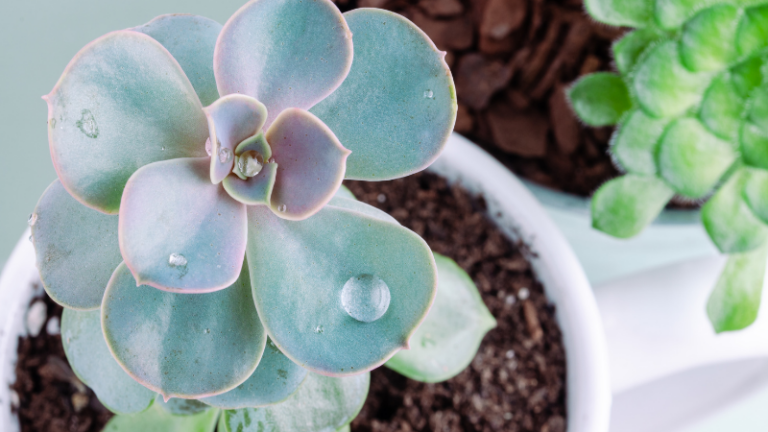Like many plant enthusiasts, I spent a long time growing a tree-like aloe plant, better known for its medicinal properties, and I had no idea it could even bloom.
This isn’t surprising, given that this plant prefers to flower in its natural habitat, where the climate is quite different from ours: Africa’s hot and arid conditions, not in our homes.
This is why, in most cases, aloe plants don’t bloom for us, but if you create the right conditions for the plant, you can easily achieve flowering in a domestic setting. I learned this through my personal experience.
Next, I’ll describe how an aloe plant blooms, and then you’ll find out what conditions need to be created in your home for the plant to flower. It turns out it’s all relatively straightforward.
Contents
How and when does the Aloe vera plant bloom?
If you’ve never seen any flowers on your aloe plant, don’t worry. Only mature plants, at least four years old, will bloom.
Generally, flowering occurs between spring and fall, but it depends on the species and variety. Unlike plants like agave, Aloe vera doesn’t die after it blooms.
Instead, flowers form at the top of the stem, which can be branched, simple, or clustered.
The cluster-like inflorescences of Aloe vera, with colors ranging from red to shades of orange and yellow, are similar to those of Kniphofia, a genus of plants in the Liliaceae family.
My aloe plant began to bloom after a long flower stalk, about 16 inches (40 cm), emerged from the central rosette of leaves.
I had one stalk, but there can be several. Many small, narrow, elongated, bell-shaped flowers were arranged in a neat cluster on this stalk.
The flowers opened gradually from the bottom to the top. My plant’s flowers were orange, but there were also white, yellow, and red flowers in nature.
Only after this did I study several books about aloe and learn that the flower color largely depends on the plant species.
The most common types of flowering aloe plants grown in homes include the following species:
- Aloe arborescens (Torch Aloe)
- Aloe striata (Coral Aloe)
- Aloe brevifolia (Short-leaved Aloe)
- Aloe cameronii (Cameron’s Ruwari Aloe)
- Aloe ferox (Cape Aloe)
- Aloe aristata (Torch Plant or Lace Aloe)
- Aloe maculata (Soap Aloe)
Frequency and Timing of Blooming
With proper growing conditions, aloe plants can typically bloom by their third or fourth year after planting.
You can achieve flowering twice a year – in spring and autumn. Aloe blooms can last from three to six months.
How to Care for Aloe to Make It Bloom
It was quite simple: I went on a long vacation with my family one summer. Our grandmother was supposed to care for my plants but forgot about the aloe on a small porch and didn’t water it.
When we returned from vacation, I was a bit upset, but after some time, my aloe sent a stalk and bloomed. For me, it was a miracle! I didn’t even know it could flower before.
That’s when I realized that the plant bloomed in my case due to drought, which approximated African conditions.
For repeat blooming, I had to perform specific steps for flowering annually:
- Starting in March, I feed the plant twice a month with liquid mineral fertilizer for succulents.
- In the summer, I move the aloe to an open porch. I initially leave it there for an hour, then gradually increase the time it spends outdoors. During hot midday hours, I provide diffused natural light.
- I water the plant twice a week with room-temperature, settled water.
- In September, when the evening outdoor temperature drops below 60°F (15°C), I bring the plant back inside and place it on a well-lit windowsill.
- I organized the proper winter care in December as follows: I placed the aloe in a room with an air temperature of 50-54°F (10-12°C) and low humidity. I then adjust the daylight hours to 12-15 hours per day with the help of fluorescent lamps. During this time, I water the plant with a small amount of water once a week and stop feeding.
- At the end of February, I bring the plant out of its artificially created resting period by moving it to a warm room with a temperature of 72-77°F (22-25°C). After that, I return the watering to normal (twice a week) and feed the plant.
Under the influence of high temperatures, my aloe plant starts to awaken and send out a stalk. Further care is standard.
Incorrect Actions that Prevent Blooming
Improper care for aloe plants is often the reason for the absence of flower buds. During plant care, you should avoid the following actions:
- Frequently repotting the plant. Aloe is a low-maintenance plant that can grow in the same pot for up to 5 years without being repotted. Exceptions may be cases when the pot becomes too cramped. If repotting is necessary, be aware of the potential for aloe vera repotting shock.
- Not allowing the plant to enter a dormant period. Like any succulent, aloe needs a winter rest. During this time, reduce the amount of fertilizer and lower the air temperature in the room.
- Overly moist air. This type of care can lead to the absence of inflorescences and the rotting of leaves. Learn how to save aloe leaves from turning brown and soft.
- Keeping the room too warm.
- Moving the pot to a new location too frequently.








